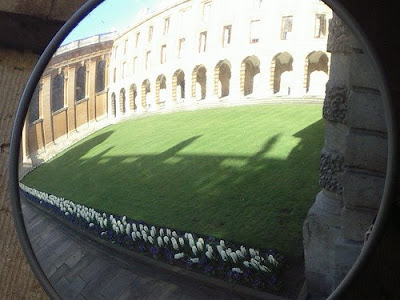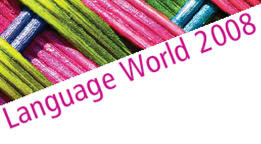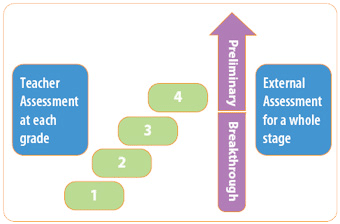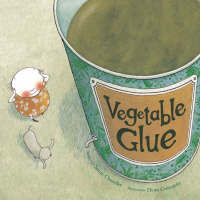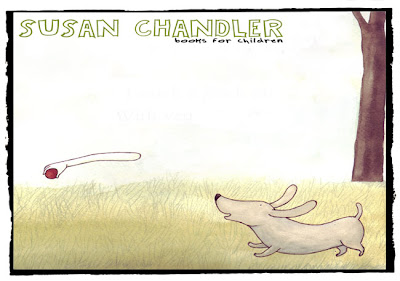It’s a week since Language World and I have sat down each day intending to blog about it, but everytime I’ve had to do something else first and the post hasn’t materialised. It’s not that I haven’t got anything to say, it’s more that there was so much to assimilate that it’s not something I could do in five minutes! Anyway – here are my impressions.
Kathy Wickstead shared thoughts on the new KS3 curriculum – things that stood out for me were Sir Christopher Maynard’s comment that ‘it’s inviting teachers to be bold’ and also Kathy’s parting comment – ‘we’re being offered an opportunity with this new curriculum – can we afford NOT to take it?’ Check out www.all.nsc.org.uk for all you need to know about the new secondary curriculum for languages – worth it for primary language teachers too so as to understand ‘what happens next’. On the same (ish) subject, Mick Waters spoke really clearly and sensibly about the new curriculum and the ‘big picture’. He seems so passionate and completely committed to the vision of a modern world class curriculum that it’s not hard to catch his vision.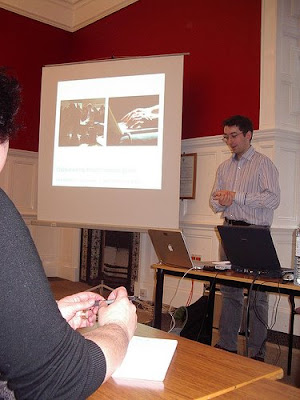
Ewan McIntosh once more challenged and inspired me with his ideas on using technology in language teaching. This time, Thinking out of the XBox suggested ways in which gaming might be used to inspire and encourage creativity in the language classroom. My son was particularly looking forward to me attending this seminar as I bought a Nintendo DS last year following Ewan’s seminar at Language world and he was hoping for a similar result this year, possibly a Wii? Alas for 9 year old, no such recommendation, but he is awaiting the arrival of Myst and Nintendogs from Amazon, and has had a good nose at Samorost (he’s become my chief researcher ;o) Using clips from Youtube and Tim Rylands’ website, Ewan made a great case for being innovative and creative, tapping into what pupils are familiar with and enjoy with the purpose of achieving a greater variety and richness of learning experience and outcome. Check out his blog for his notes – and much more to make you think!
Wendy Adeniji as always shared some brilliant ideas and resources for making the language classroom interactive and fun, specifically based on Rhymes songs and sounds to teach phonics.
Wendy showed how simple rhymes can be learned off by heart and recited, and links made with other vocabulary that contains specific phonemes. I always look forward to wnedy’s seminars as her ideas are easy to implement and very practical.
She recommended a number of artists’ music; for French, Ilona Mitrecy and Henri Des as well as the adorable Pigloo! For Spanish she suggested José Luis Orozco and for German, Detlef Jöcker and Rolf Zuckowski.
Bev Whiteside, Development coordinator for Languages and Sport from the Youth Sports Trust presented on making links between sports and language. A language teacher before joining the YST, Bev talked about the obvious attractions and benefits of sport and the potential links that could be made in terms of skills, values, pedagogy and context. She presented some brief case studies to demonstrate each point, ranging from teaching handball through Spanish, the Young Language Leaders award, creating a fitness DVD in French prior to a skiing trip and a subtitled video giving information about healthy eating and sporting facilities. You can read about some of Bev’s work in a book published by YST.
Day 2 brought Steven Fawkes’ Language Learners being creative with language, including sign language, Russian numbers with actions ( I tried it out on a Russian pupil I teach and she was impressed!) and things to do with a pear! Learned lots and had a good giggle too -the mysterious disappearance of Steven’s trousers last year featured large too – perhaps they’re the same place as my hairbrush that disappeared in Oxford?? There’s a chorister somewhere with very well groomed hair ;o)
I was also pleased to hear an update on the videoconferencing project at Tile Hill Wood in Coventry where Ana Neofitou delivers language lessons to local primaries via a videolink. I attended a session last year introducing the project which seems a very effective way of building capacity in primary languages as the class teacher facilitates within the classroom and works closely with Ana and her colleagues on what is delivered, and how it can be followed up during the time between lessons.
And then the ALL London Show and Tell session – I shared the ‘stage’ with Stephane Derone (authentic resources), Nick Mair (learning styles and gender differences), Monna Brown (motivation) and Helen Myers (using song) – all members of ALL London so I was a bit of an interloper! I delivered my Top ten tips for Primary Languages in a little over my alloted 7
minutes I think (sorry -I talked as fast as I could!) You can download the presentation below (if the songs links don’t work, let me know!) And when I find the lead for my iRiver, I’ll make a Slidecast!
But of course, there is more to Language World than the seminars! I love conferences for the ‘formal’ learning but, as anyone who has met me will testify, I love to talk. And talk I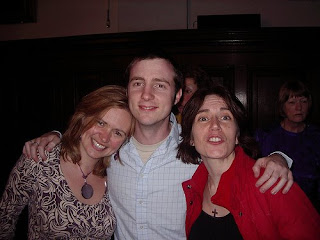 did – incessantly! I met old friends like Joe Dale, Lesley Welsh, Ewan McIntosh, Chris Fuller and Rachel Hawkes, made new ones like Nick Brown and José Picardo and generally talked to anyone who’d listen! Much fun was had at the wine tasting – I think I hold the record for the most Heinneman coffee mugs acquired in half an hour (not all for me!) followed by a quick visit to the pub before the wine reception and dinner. This was followed by bellydancing – no photos have yet appeared (thank goodness!) but I hear we were a sight to behold! Bed was finally reached in the early hours – I just didn’t want to miss a moment of the fun!
did – incessantly! I met old friends like Joe Dale, Lesley Welsh, Ewan McIntosh, Chris Fuller and Rachel Hawkes, made new ones like Nick Brown and José Picardo and generally talked to anyone who’d listen! Much fun was had at the wine tasting – I think I hold the record for the most Heinneman coffee mugs acquired in half an hour (not all for me!) followed by a quick visit to the pub before the wine reception and dinner. This was followed by bellydancing – no photos have yet appeared (thank goodness!) but I hear we were a sight to behold! Bed was finally reached in the early hours – I just didn’t want to miss a moment of the fun!
Last year I went to Language World wanting to find new ideas – and I was inspired as I told Joe Dale when he VoxPop-ed me! This year I went with the same purpose, but I reflected as I arrived just how far I’d come in a year. Last year I had just learned how to write articles on our school website. I’ve now got a blog, spoken at a number of conferences, attended eTwinning conferences as an ambassador, am becoming ever more techno-savvy and am employing all kinds of new ideas in my teaching! The pupils at school associate language learning with using technology, with doing new and exciting things, and with having fun. And several people came up to me and said how much they’d enjoyed reading my blog or hearing me speak, and how helpful the ideas I’d shared had been – that made me want to sing and dance!
Here are my pictures – started off well but got distracted by talking (surprise surprise!) so you can find more here, listen to VoxPops and read what Joe and José and others had to say about LW2008.
